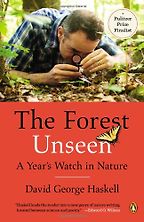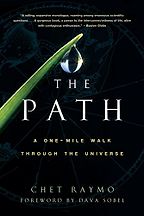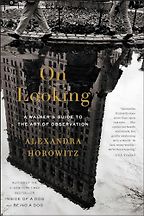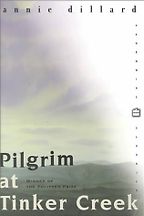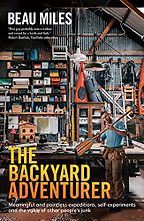Before we get to the books you’re recommending, tell me about the concept of ‘local adventures’ and why people might be interested in embarking on one.
Before I can explain local adventures, I should say that I spent years doing big adventures. I cycled around the world for four years, I rowed across the Atlantic Ocean, I walked across southern India, and I played my violin very badly through Spain. My background is that of a traditional adventurer—I wanted to see the world.
From there, though, I decided to go much smaller. I decided I wanted to go local for a few reasons.
The first was this realization that people like me, who love wild places and zooming off around the world to see all these wonderful places, are the ones who are wrecking these places more than anyone else. So that started to feel quite discordant for me. I wondered whether I cared enough about these wild places to not actually go to them.
Secondly, I’ve spent a lot of years now trying to encourage people to have ‘micro’ adventures. These are short, affordable adventures near to where you live — so wild swimming or camping locally etc. Microadventures have been quite successful, but I was always really conscious that I was slightly preaching to the converted. It still required people to be interested in camping and having a sleeping bag. I wondered if I could go even smaller and try to search for nearby nature in our everyday lives. Could all of us, wherever we live, find a bit more wildness and nature on our doorstep?
To test that theory, I decided to challenge myself to spending a whole year exploring the Ordnance Survey map of the area that I live in. It’s a fairly uninteresting square of land just outside a big city. At first, I thought that was going to be a problem for the project but, actually, I think it’s really important that I’m writing this from the point of view of someone who lives in exactly the same place as you, you and you, and not in some beautiful mountain wilderness in a log cabin.
Trying to look at a really small area—having seen the whole world—is quite an interesting comparison: the pros and cons of each.
You’ve written about this in you book Local, subtitled “a search for nearby nature and wildness.” What I like about it is that it’s very climate friendly, in that you’re not going anywhere, you’re just going out your door. But, also, I think it’s important for mental health, because many of us spend all day behind a computer. The idea of going out and exploring 100 meters down the road is a way out of that, isn’t it?
Definitely. Trying to fit in adventure or wildness or nature, or just fresh air—whichever of those appeals to you to—round the margins of our busy days is really important. It’s nice, of course, to think, ‘This year, I’m going to work two days a week, and I’m going to spend the rest of the week wandering the hills’ or ‘I’m going to take a month off and discover myself in the mountains.’ But the reality is that 99.9% of us are busy with life and that’s not going to go away. So what can we squeeze in around the edges?
I’ve been dabbling with this for a few years now. So for the last three years, I’ve been scheduling a monthly tree climb into my calendar for the first Wednesday of each month. I just climb a tree near to where I live. It’s 20 minutes of a tiny bit of exercise, a bit of fresh air, a bit of just ‘oh! Sit in a tree for a few minutes.’ And then whoosh back to the Zoom calls again.
Trying to schedule it and make it a regular commitment is a really important aspect of this, I think. I could have just said, ‘I’m going wander around my map for a year. That’ll be interesting.’ But by forcing myself to go out regularly, once a week, for the whole year, not only did I see all the seasons, it was really helpful from a mental health perspective — and the physical health side of things too.
OK, let’s go through the books you’re recommending. How did you set about choosing them?
I felt like I ought to suggest Walden but, in the end, I didn’t. I decided to focus on books about slowing down, paying attention, the power of curiosity, enthusiasm and repeated practice. Then, as my last book, I’ve got one that’s more specifically about getting out to explore locally.
Well, you’ve chosen some brilliant ones. First up is The Forest Unseen by David George Haskell, which was a finalist for the Pulitzer Prize. Tell me about the book.
The premise of The Forest Unseen is that the author is a biologist who goes out with a one meter square quadrat, which is a scientific measuring grid. You put it down and see what’s within the square. He took it to a wood near to where he lived and went to look at what he could see in this one meter square regularly throughout the whole year.
It sounds quite a boring premise, but it was beautiful. It’s a book about just looking and looking and being interested in everything. There’s the blossom coming in spring, there are insects — and that would then lead him off into a long explanation about the evolution of insects. It was a very educational nature book. It’s done in a way that made me think, ‘This is achievable. I could do this in one meter square of my garden if I just slow down and am interested in everything.’
I feel quite ignorant, compared to my parents’ generation, about nature — even just the names of the trees near my house.
Knowing the names of things is a superpower. I’m useless at it as well, but I use an app called Seek. I talk about it a lot in my book—it has been such a useful companion. It’s like having someone clever, like David Haskell, in my pocket to help me learn. Once you know the name of a tree, you start to see it more often and you start to care about it and connect with it more. It’s very important, I think, to learn names.
Let’s go on to The Path: A One-Mile Walk Through the Universe by Chet Raymo. This is a similar concept, in that he’s also focusing on a small area.
Yes, it’s a similar premise. Again, it’s by a scientist—he’s a physicist—and it’s about the one-mile commute that he’s done every day for decades. What he does on this walk is to just to slow down and be interested in it.
And because he’s a physicist, he comes at things from the space point of view. So he picks up a pebble and realizes, ‘Oh, this pebble was once part of a huge mountain, which was once an asteroid flying through space.’ It’s about the hugeness that you can find in a pebble—it’s that line of William Blake’s “To see a World in a Grain of Sand.”
He talks about all sorts of things–from black holes to bluebirds. Again, it was a really good way of teaching me about stuff I know nothing about in a way that in a normal science book, I might have found a bit dry and boring.
Let’s turn to your third book: On Looking by Alexandra Horowitz. Apparently, we miss 80% of what see around us!
She lives in New York and walks around her city block with her dog every day, just like millions of people do. But yes, she realized that she was missing most of what she saw.
So what she did was to walk around her block 11 times with 11 different experts. They point out to her the things that she has been missing. This really fascinated me. When I was doing my map of the stuff I found interesting, if I’d had different companions with me, they would have found totally different things fascinating. So she goes with an artist, a geologist, a doctor. But also, really interestingly, with a kid and with her dog. You know how if you go for a walk with a toddler, it’s so frustrating because they’re just so slow, they’re down on their knees looking at things? That frustration is actually the curiosity and enthusiasm and willingness to learn that’s at the heart of all of these projects.
We’re now at Pilgrim at Tinker Creek by Annie Dillard, which won the Pulitzer Prize for non-fiction in 1975. For those who don’t know it, can you say what it’s about?
I would imagine this book is the most familiar to Five Books people—it’s been recommended a bunch of times. I love reading books and read loads of them. But, to be honest, quite often they tend to go in one ear and out the other. I read Pilgrim at Tinker Creek when I was cycling through Siberia in the middle of winter 20 years ago, and it’s one of the few books that’s completely stuck with me.
She lives in a cottage somewhere near this little creek called Tinker Creek. Over a period of time, she goes out and walks down by the river, comes home, and is astonished about it. It’s borderline theological. She’s wondering a lot about God and where we fit in with creation. There’s overlap between not religion exactly, but spirituality and science.
And she writes very beautifully. She writes about the awe and the terror and the brutality of the universe, but also the incredible beauty and gentleness of it all. There’s a scene in there—I think it was a dragonfly eating its mate’s head or something. I can’t remember the details, but it viscerally stuck with me. She’s just calling on everyone to throw themselves down on their knees and be astonished.
It’s interesting you mention spirituality and science in this book, because I noticed that’s the subject of several other books by the author of The Path, Chet Raymo, the physicist you mentioned. I guess awe at nature is akin to a kind of spiritual experience, maybe…
Yes. On the one hand, you might think astrophysicists are the least likely to be religious because they’ve looked down their telescopes and seen zero evidence of God. But, equally, if you’re looking down your telescope at billions of years and quadrillions of galaxies, then that probably does start to blow the mind somewhat. I can see how there’s a strong overlap between thinking, ‘Wow, this is vast’ and that sense of awe and wonder.
So, lastly, we’re going to turn to some more practical recommendations for anyone who really is planning to go on a local adventure. Your book, Local, describes how you did it. You’ve already mentioned the app, Seek. Before we get to your last book recommendation, tell me about the other critical item for this project, a map.
The whole of Britain is divided up into Ordnance Survey maps, so I bought the local map of where I live. It covers 20 kilometers by 20 kilometers. (The US equivalent is the U.S. Geological Survey). Once a week I went out to a place I chose at random on the map. That randomness was really important to me, because otherwise I would just have gravitated to the sorts of places I always like going to. So I’d use an online random number generator to pick where on the map I had to go. Then I’d go there, usually on foot, but occasionally by bike, with my camera. Having a camera was also quite important to me, because that forced me to slow down and be observant.
My challenge was quite a conceited one, which was to see everything in that square: every street, every footpath, every bit of woodland.
That woodland/countryside aspect led me to an awareness of how little of our country is open to general access, which got me got me thinking about a book by Nick Hayes, The Trespasser’s Companion. But I think Beau Miles’s book is probably more suitable in terms of thinking a bit differently about adventure.
Yes, tell me about The Backyard Adventurer.
I think for people who are interested in adventure, there can be—and I’ve certainly done this—a feeling that if it’s not some really big adventure, then it’s a bit rubbish and pointless and not worth bothering with. Adventure can also be quite a comparative thing. You think, ‘Oh, what I’m doing isn’t as exciting as what Ranulph Fiennes or Bear Grylls are doing, therefore it doesn’t count and is not relevant.’ That’s really nonsense and that’s what Beau Miles talks about in his Backyard Adventurer book.
He’s Australian and quite a wacky guy. His background is the very conventional, middle-class explorer adventures like me. But this book is about, after going all the way around the world and doing some really big stuff, coming back to where he lives, and finding excitement and adventure in much smaller, mundane things.
He makes videos for YouTube, which are brilliant. One great example of what he’s done is run a marathon. That’s quite a good challenge. Lots of people aspire to do it, but it’s also quite hard to fit into your routine. So he decided to do a marathon over the course of a day by running one mile, every hour. So he runs a mile, which takes 15 minutes or so. Then he has a list of other jobs to do that day. So he spends 45 minutes on those. Then he goes to run the next mile. And so, over 24 hours, he runs a marathon, which is quite a big challenge. But he also ticks off this series of quirky things he’s trying to get done. It’s a challenge to be a bit more creative with what you define as adventure in your life.
Just focusing a bit more on the practical side again. So do I need to buy a map which has my house right in the middle of it?
There are two ways of doing it. You can just go to a bookshop and buy the bog standard Ordnance Survey map for your area. Everyone in Britain is on one of these maps, and they cost about nine pounds. If you want to be a bit fancier, on the Ordnance Survey website you can customize the map for your house, so they’ll make a map for you with your house nicely in the middle.
The point is that you’re doing one Ordnance Survey map in great detail?
Yes. And it’s really about the constraint of saying, ‘This is all I’m allowing myself.’ For someone like me, who’s a wanderer and quite energetic, that felt quite restrictive and claustrophobic at the start of the year. But going out weekly, I soon realized that if I paid enough attention, one map is enormous. I couldn’t possibly do it justice in a year. It’s not too small—it’s actually far too big.
Speaking to you reminds me of an interview I did a few years ago with a spider enthusiast—that you don’t have to go anywhere to see these fascinating creatures because they’re right there in your own house or garden. I love The T.S. Eliot quote at the beginning of your book:
“We shall not cease from exploration
And the end of all our exploring
Will be to arrive where we started
And know the place for the first time.”
That’s quoted in lots of adventure-type books, but for this one it felt really spot on. A part of it was this realization that I felt a greater attachment to far-off places than to my own neighborhood I live in. We’ve got to this thinking in our world that in order to have an adventure, you must spend a huge amount of money and jump on an airplane. And that seems completely ridiculous, really.
Five Books aims to keep its book recommendations and interviews up to date. If you are the interviewee and would like to update your choice of books (or even just what you say about them) please email us at [email protected]
Five Books interviews are expensive to produce. If you've enjoyed this interview, please support us by donating a small amount.


